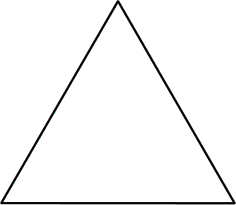24 JAN 2015 by ideonexus
 Profiting on Asteroids
Profiting on Asteroids
Some of the first questions which come up in any practical discussion of space colonization are questions of economics. Suppose we go out and settle on a convenient asteroid with our little spaceship, what do we do when we get there? How do we make a living? What can we expect to export in order to pay for necessary imports? If space colonization makes any sense at all, these questions must have sensible answers. Unfortunately, we cannot hope to answer questions of economics until the asteroi...Folksonomies: space colonization
Folksonomies: space colonization
22 FEB 2014 by ideonexus
 Nature Doesn't Need Our Help to Destroy the Earth
Nature Doesn't Need Our Help to Destroy the Earth
For me, the most paralyzing news was that Nature was no conservationist. It needed no help from us in taking the planet apart and putting it back together some different way, not necessarily improving it from the viewpoint of living things. It set fire to forests with lightning bolts. It paved vast tracts of arable land with lava, which could no more support life than big-city parking lots. It had in the past sent glaciers down from the North Pole to grind up major portions of Asia, Europe, a...Folksonomies: nature environmentalism
Folksonomies: nature environmentalism
Observation by Kurt Vonnegut that nature does a fine job of making the Earth uninhabitable regularly on its own.
22 MAR 2012 by ideonexus
 The Success of Zoos
The Success of Zoos
Given that 143 million people visit accredited zoos and aquariums each year, the Association of Zoos and Aquariums is entitled to the claim that the association is building North America's largest wildlife conservation movement. Zoos and aquariums are mainstream environmental organizations. Their supporters, some 48 million registered members, are extraordinarily committed to conservation, and AZA zoos and aquariums back up their boast with money, spending some $250 million in 2006 on i,719 c...As an example of a capitalist solution to conservation.
15 JUN 2011 by ideonexus
 French Encyclopedists Disparage Wildlife in the New World
French Encyclopedists Disparage Wildlife in the New World
We formerly remarked, as a singular phaenomenon, that the animals in the southern provinces of the New Continent, are small in proportion to those in the warm regions of the Old. There is no comparison between the size of the elephant, the rhinoceros, the hippopotamus, the camelopard, the camel, the lion, the tiger, &c. and the tapir, the cabiai, the ant-eater, the lama, the puma, the jaguar, &c. which are the largest quadrupeds of the New World: The former are four, six, eight, and...Buffon states that mammals of North America are smaller and its Native Americans less developed than European life, owing to the continent's lack of resources and cold climate. Reptiles and insects thrive, however.




